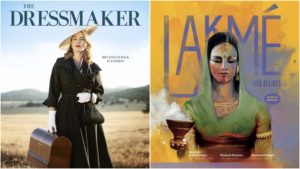
Opera Meets Film: The Brief Use of the ‘Lakmé’ Duet in ‘The Dressmaker’
By David Salazar“Opera Meets Film” is a feature dedicated to exploring the way that opera has been employed in cinema. We will select a section or a film in its entirety, highlighting the impact that utilizing the operatic form or sections from an opera can alter our perception of a film that we are viewing. This week’s installment takes a look Jocelyn Moorhouse’s “The Dressmaker.”
“The Dressmaker” isn’t a particularly good film. And it’s use of opera is a highlight of what makes it questionable in its quality.
Let’s set the scene. Set in a fictitious and close-minded town in rural Australia, the film aims to showcase the closeminded and superficial nature of its inhabitants. It certainly achieves this perspective by showcasing the superficiality of the characters, the film itself superficial in its execution. And the “opera” scene is right there with this stylistic choice.
Sergeant Farrat has been dressing up and imagining himself in female attire throughout his entire life. But he has had to keep this part of himself away from public view due to the conservative values of the town.
But halfway through the film he simply can’t contain himself any longer. At the home of Judy and Tilly Dunnage, the only two people he feels comfortable with, he takes fabrics and starts trying them on himself. He runs outdoors and “frees” himself, seeing his identity reflected in a dozen mirrors on a tree. This is his “coming out” in metaphorical and literal fashion.
To highlight the moment, we get the famous duet from “Lakmé” to add “pathos” and vibrancy to this opening up. The use of the two female voices seems to emphasize the power of Farrat’s feminine side coming to the forefront rather potently.
And that’s it. A brief scene with opera put in to showcase the “coming out” of a character. It works in the context, but the use is as superficial as the moment, building little thereafter and coming in rather awkwardly in a film that never uses the musical style again for its entire running time. Hence the brevity of this article.


